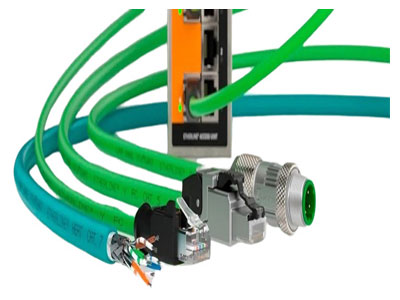Key Takeaway
The topologies of Industrial Ethernet define how devices are connected in a network. The most common topologies are star, line, and ring.
In a star topology, all devices are connected to a central switch, offering high reliability but depending on the switch. Line topology connects devices in a chain, making it simple and cost-effective but less fault-tolerant. Ring topology forms a closed loop, ensuring redundancy, as data can travel in both directions if a connection fails. Each topology is chosen based on the network’s requirements for reliability, cost, and scalability.
Overview of Common Network Topologies (Star, Ring, Bus)
Industrial Ethernet networks typically employ one or a combination of these topologies:
Star Topology: In a star topology, all devices connect to a central switch or hub. This setup ensures easy troubleshooting, as a failure in one device doesn’t impact the others.
Ring Topology: Devices are connected in a closed loop. If one link fails, data can still travel in the opposite direction, ensuring reliability.
Bus Topology: Devices share a single communication line. While cost-effective, this topology can suffer from network congestion as more devices are added.
Each topology serves different needs, balancing cost, reliability, and scalability. The choice depends on the complexity and size of your industrial network.

How Star TopologyWorks in Industrial Ethernet
Star topology is one of the simplest and most widely used configurations in industrial Ethernet. In this setup, each device connects to a central switch, creating a direct path for data transmission.
This topology is highly reliable because a failure in one connection doesn’t affect the rest of the network. Troubleshooting is straightforward, as issues are isolated to individual links. It also provides excellent performance, as devices don’t compete for bandwidth on shared lines.
However, star topology has its limitations. The central switch becomes a single point of failure, meaning the entire network can go down if it malfunctions. To mitigate this, industrial networks often use redundant switches or incorporate backup power supplies.
For small to medium-sized networks where reliability and ease of maintenance are priorities, star topology is an excellent choice.
Benefits of Using Ring Topology in Industrial Networks
Benefits of Using Ring Topology in Industrial Networks
Understanding Mesh Topology for High Reliability
Mesh topology is the most advanced and robust configuration used in industrial Ethernet. In this setup, each device is connected to multiple others, creating multiple pathways for data transmission.
The key advantage of mesh topology is its high reliability. Even if multiple connections fail, data can still find an alternate route to its destination. This makes it ideal for large-scale industrial networks like oil refineries or transportation systems, where network failure is not an option.
However, mesh topology is complex and expensive to implement. It requires more cabling, switches, and advanced network management software. Despite these challenges, its scalability and fault tolerance make it a valuable choice for industries prioritizing uptime and resilience.
Choosing the Best Topology Based on Industrial Application
Selecting the right topology depends on your network’s size, complexity, and reliability requirements.
For small networks, star topology offers simplicity and cost-effectiveness.
In medium-sized networks with critical operations, ring topology provides redundancy without excessive complexity.
For large-scale or mission-critical networks, mesh topology ensures maximum reliability and scalability.
Consider factors like cost, ease of maintenance, and future scalability when deciding. Often, a combination of topologies, known as a hybrid approach, is used to balance performance and reliability.
Conclusion
The choice of Industrial Ethernet topology significantly impacts network efficiency and reliability. Whether you prefer the simplicity of star topology, the redundancy of ring topology, or the robustness of mesh topology, understanding their strengths and limitations is key.
By carefully evaluating your application needs, you can design a network that ensures optimal performance, scalability, and uptime, even in the most demanding industrial environments.
